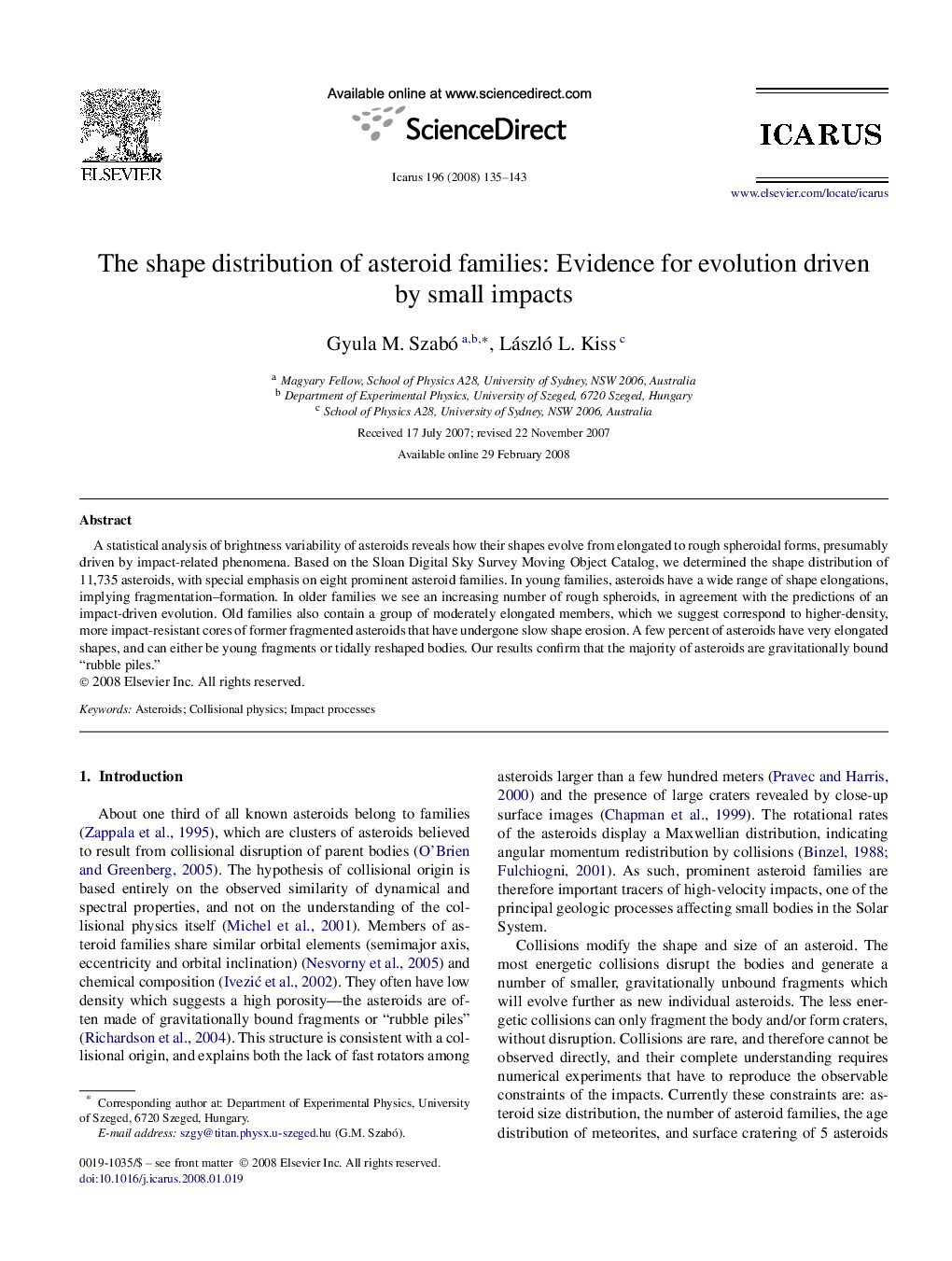| Article ID | Journal | Published Year | Pages | File Type |
|---|---|---|---|---|
| 1775135 | Icarus | 2008 | 9 Pages |
A statistical analysis of brightness variability of asteroids reveals how their shapes evolve from elongated to rough spheroidal forms, presumably driven by impact-related phenomena. Based on the Sloan Digital Sky Survey Moving Object Catalog, we determined the shape distribution of 11,735 asteroids, with special emphasis on eight prominent asteroid families. In young families, asteroids have a wide range of shape elongations, implying fragmentation–formation. In older families we see an increasing number of rough spheroids, in agreement with the predictions of an impact-driven evolution. Old families also contain a group of moderately elongated members, which we suggest correspond to higher-density, more impact-resistant cores of former fragmented asteroids that have undergone slow shape erosion. A few percent of asteroids have very elongated shapes, and can either be young fragments or tidally reshaped bodies. Our results confirm that the majority of asteroids are gravitationally bound “rubble piles.”
